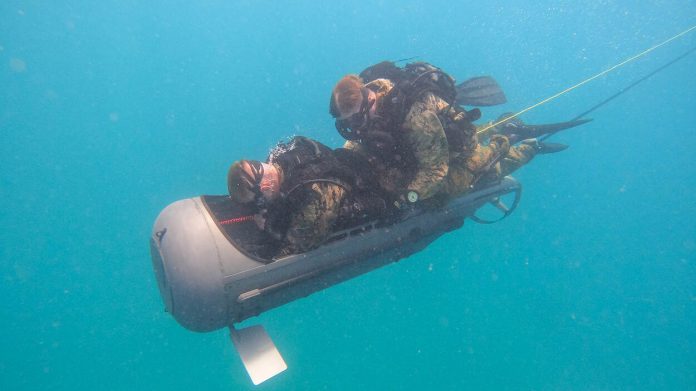
Diving in the crystal clear waters around Aruba is on the bucketlist of many tourists, but the beautiful underwater world that these waters offer are also an important terrain for practicing when it comes to the divers of the 2nd Reconnaissance Battalion from 2nd Marine Division, United States Marine Corps.
The Marine Squadron Carib (MSC) based in Aruba hosts its American colleagues once a year. The Coastal Caribbean Warrior (CCW) joint diving exercise recently took place again, and the Marine Corps worked on deepening and broadening teamwork and cooperation.
The expertise being shared during the training this year was all about tactical diving. The American visitors were supported by frogmen from The Netherlands Maritime Special Operations Forces (NLMARSOF). The frogs shared their expertise and were able to help the partners elevate their training to a higher level.
The first week of CCW was mainly devoted to refreshing basic skills, both individually and in buddy teams. During this week the diving took place mainly in the quiet waters of Commandeurs Bay. There was also for the first time training with the Enhanced-Diving Propulsion Device (underwater scooter). It’s an ideal device for the moving of people and equipment over longer diving distances.
After the first series of dives, the training sessions were done with complete teams of 6 men. These sessions consisted of visiting various diving sites in order to experience different underwater conditions, depths and currents. The training period was concluded with 2 Full Mission Profile dives, where 3 teams of 6 men had to perform missions on different beaches. They differed between securing the beach, doing an Intel pick-up or a beach reconnaissance for a raiding force.
As a result, there was a successful binational collaboration of American diving teams, Dutch Infantry from the MSC and the FRISCs who together formed the raiding force.
Source and pictures; magazines.defensie.nl.



















